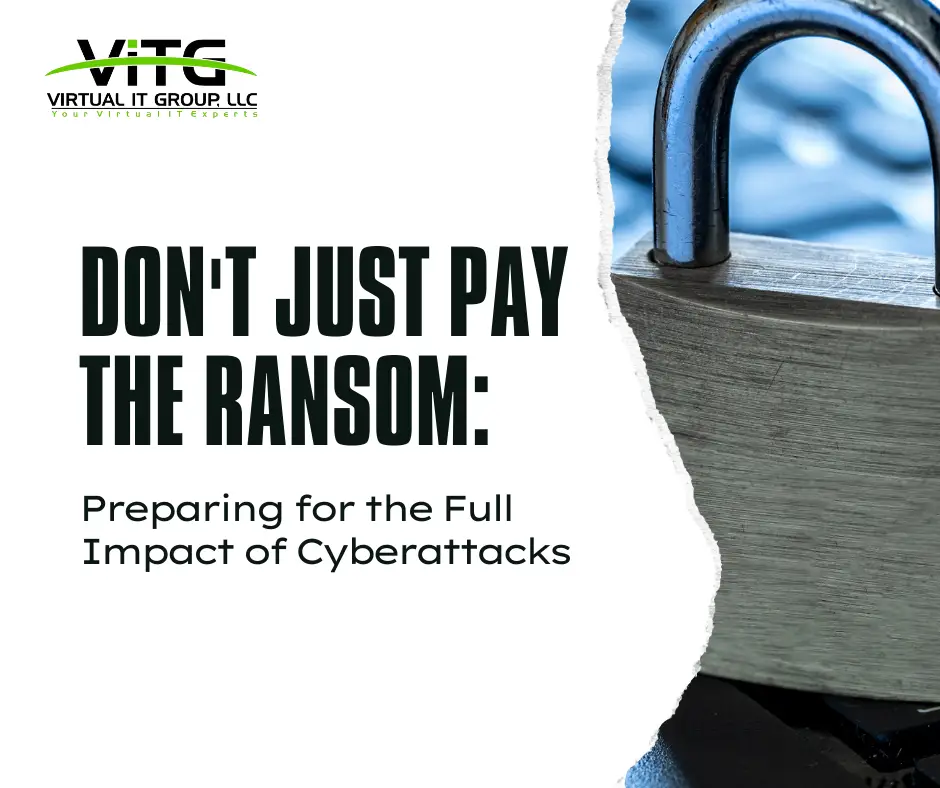Imagine this: you wake up one morning to find your computer screen displaying a menacing message. All your files are encrypted, locked away like a digital hostage situation.
The message demands a hefty ransom payment in exchange for the decryption key. This is the chilling reality of a ransomware attack, a growing cyber threat targeting individuals and businesses alike.
While the temptation to simply pay the ransom and regain access to your data might be strong, it’s crucial to understand that this is just the tip of the iceberg. Cyberattacks like ransomware have a ripple effect, causing damage beyond the initial loss of data.
This article delves into the hidden costs of cyberattacks and explores practical steps you can take to prepare for and mitigate their full impact.
Beyond Data Loss: The Hidden Costs of Cyberattacks
While data loss is a significant concern, the financial repercussions of a cyberattack can extend far beyond the ransom itself. Here’s a breakdown of some hidden costs to consider:
- Business Disruption: A cyberattack can cripple your operations for days or even weeks. This can lead to lost revenue, missed deadlines, and a decline in productivity.
- Reputational Damage: A data breach can seriously damage your reputation, especially if customer information is compromised. Regaining customer trust after a cyberattack can be a long and arduous process.
- Regulatory Fines: Depending on the nature of the attack and the type of data compromised, your organization might face hefty fines from regulatory bodies.
- Forensic Investigation & Recovery: Investigating the source of the attack and recovering your data requires specialized expertise, adding to the overall cost.
- Increased Insurance Premiums: Cyberattacks can lead to a rise in your cyber insurance premiums.
The sum of these hidden costs can be far greater than the initial ransom demand. By understanding the full impact of a cyberattack, you can appreciate the importance of a proactive approach to cybersecurity.
Preparing for the Storm: Building Your Cyber Defenses
The best defense is a good offense. Here are some proactive steps you can take to prepare for a potential cyberattack:
- Employee Education: Your employees are often the first line of defense against cyberattacks. Regularly train them on cybersecurity best practices, including identifying phishing emails and avoiding suspicious links.
- Strong Passwords & MFA: Enforce strong password policies and implement multi-factor authentication (MFA) to add an extra layer of security for user logins.
- Regular Backups: Maintain regular and secure backups of your data. This ensures a clean copy is readily available for recovery in case of a cyberattack. Consider the 3-2-1 backup rule: having 3 copies of your data, on 2 different media types, with 1 copy offsite.
- Security Software: Utilize up-to-date antivirus and anti-malware software to detect and prevent malware infections.
- System Updates: Regularly patch and update all software and operating systems to address known vulnerabilities.
- Network Security: Implement network segmentation and firewalls to limit attacker access to critical systems.
- Incident Response Plan: Develop a comprehensive incident response plan outlining steps to take in case of a cyberattack. This plan should include data recovery procedures, communication protocols, and potential legal considerations.
Beyond Self-Defense: Partnering with Cybersecurity Experts

roman synkevych E V6EMtGSUU unsplash
While implementing these measures is a great start, staying ahead of the ever-evolving cyber threat landscape can be challenging. Partnering with a reputable cybersecurity company like Virtual IT Group can provide your organization with the expertise and resources needed to build a robust defense strategy.
Virtual IT Group offers a comprehensive suite of cybersecurity services, including:
- Vulnerability Assessments & Penetration Testing: Identify and address weaknesses in your IT infrastructure before attackers exploit them.
- Security Awareness Training: Train your employees on the latest cyber threats and best practices.
- Managed Detection and Response (MDR): Have a team of cybersecurity professionals continuously monitor your network for suspicious activity and respond to threats in real-time.
- Incident Response Services: Get expert assistance in the event of a cyberattack to minimize damage and restore operations quickly.
Conclusion: Resilience is Key
Cyberattacks are a growing threat, but by understanding their full impact and taking proactive steps to prepare, you can significantly reduce your risk. Remember, resilience is key. By implementing strong cybersecurity measures and partnering with the right experts, you can weather the storm and emerge stronger from a cyberattack. Don’t let a cyberattack dictate your business future. Start building your cyber defenses today!

